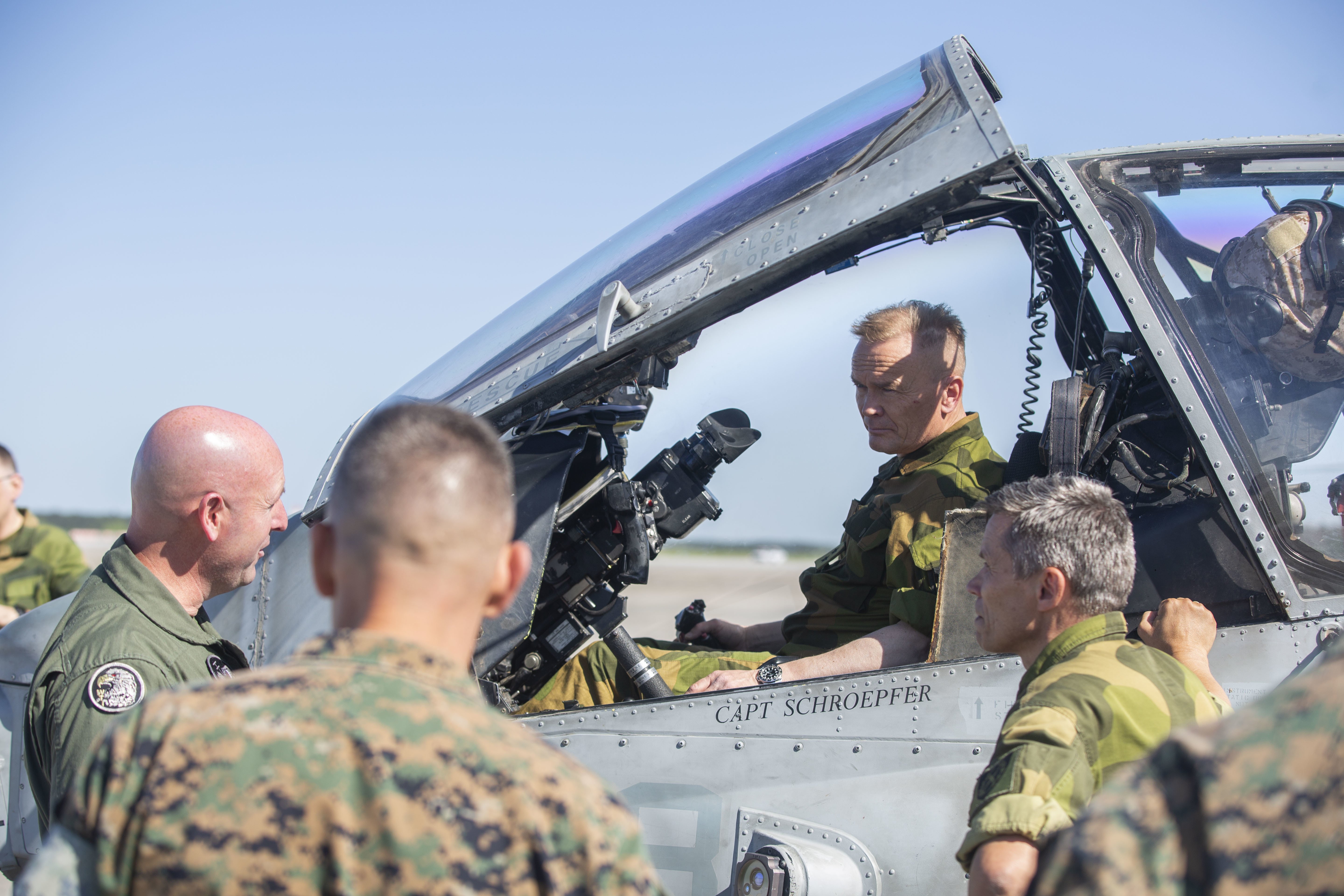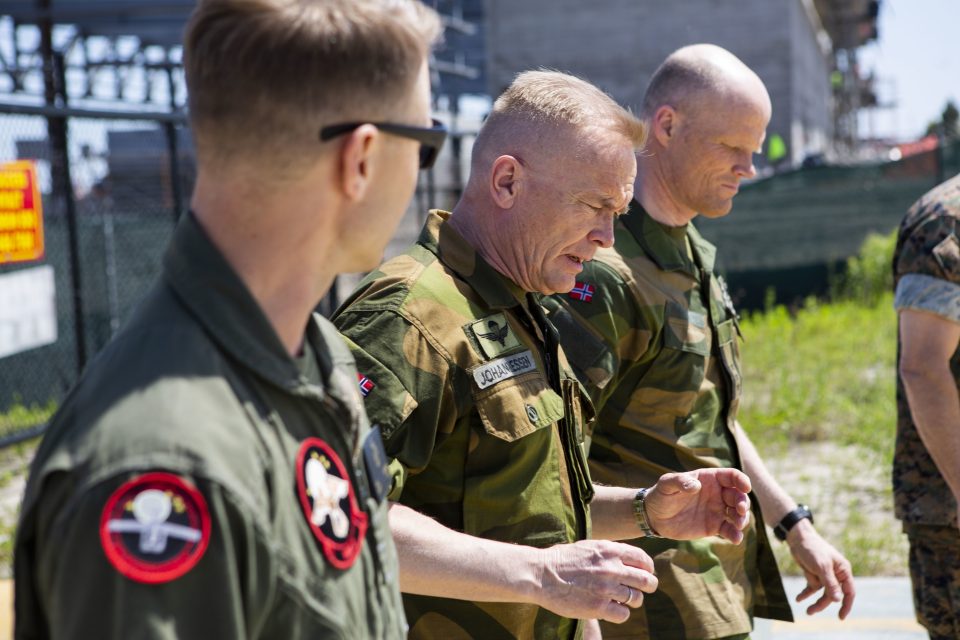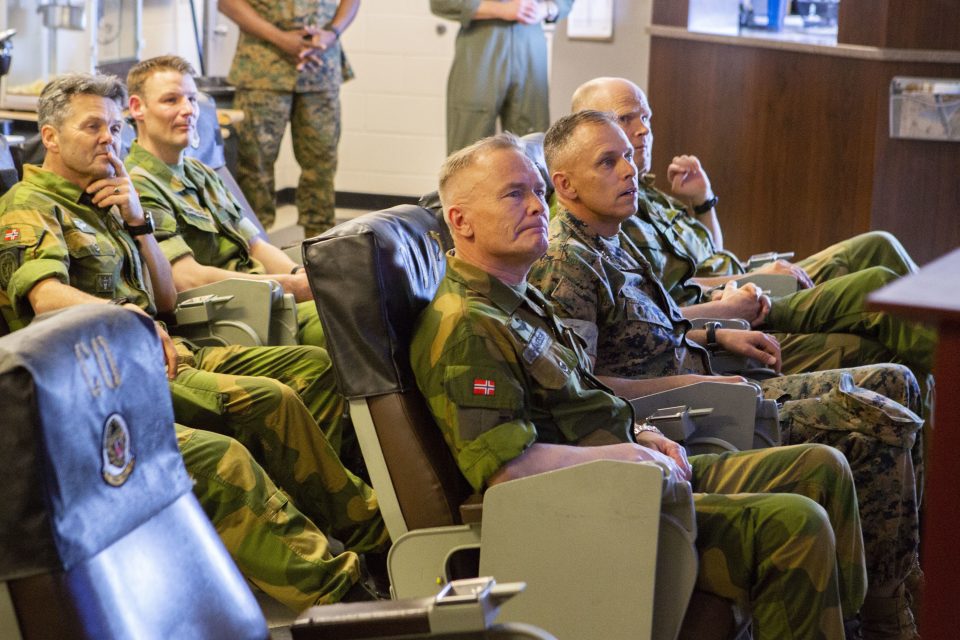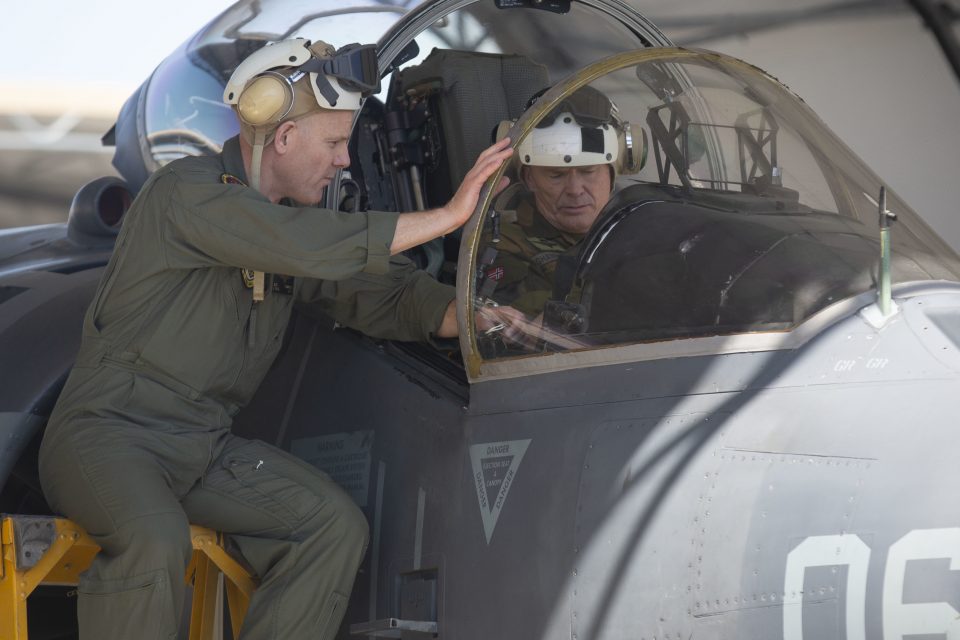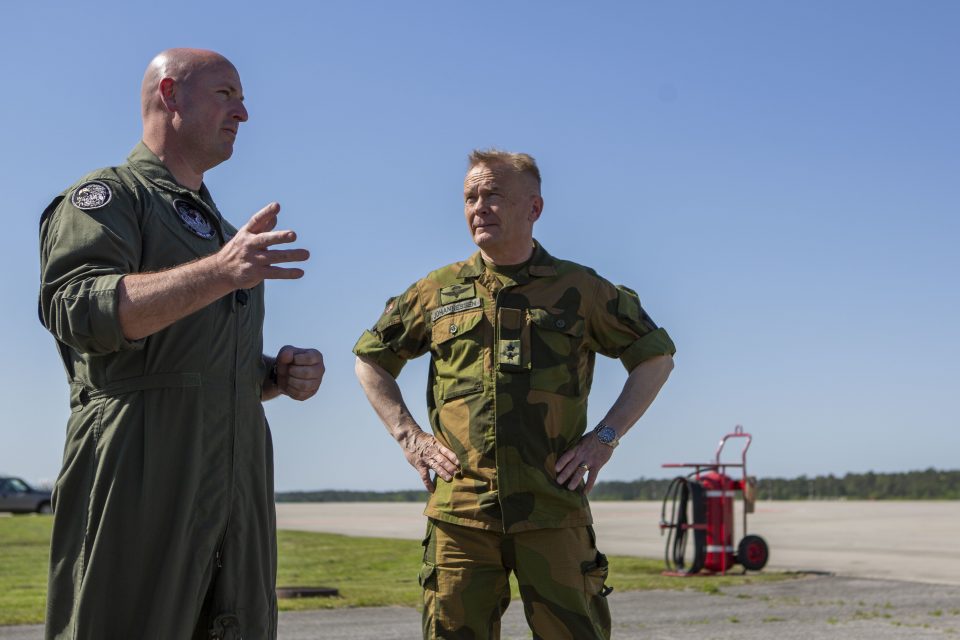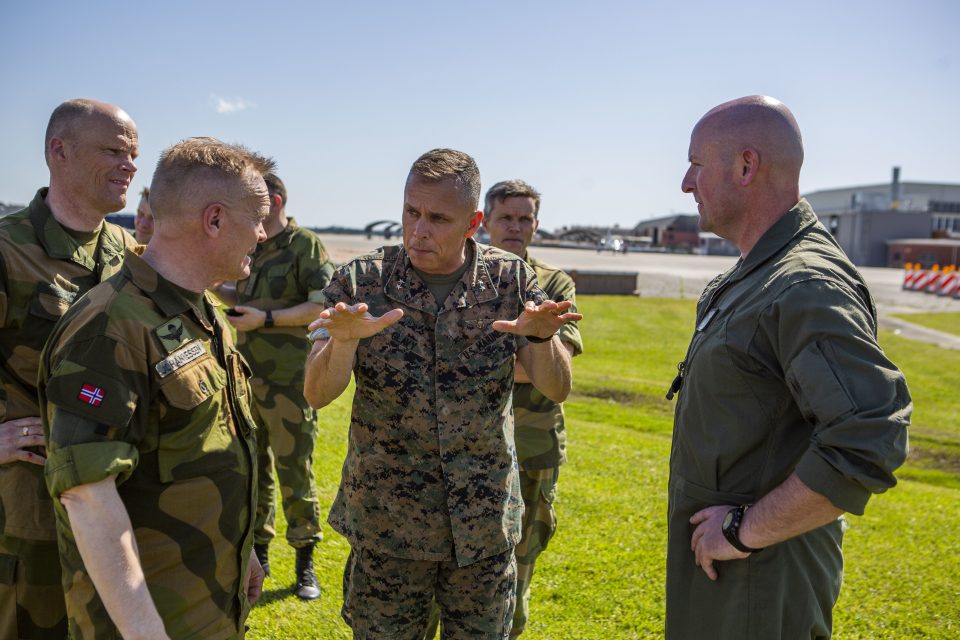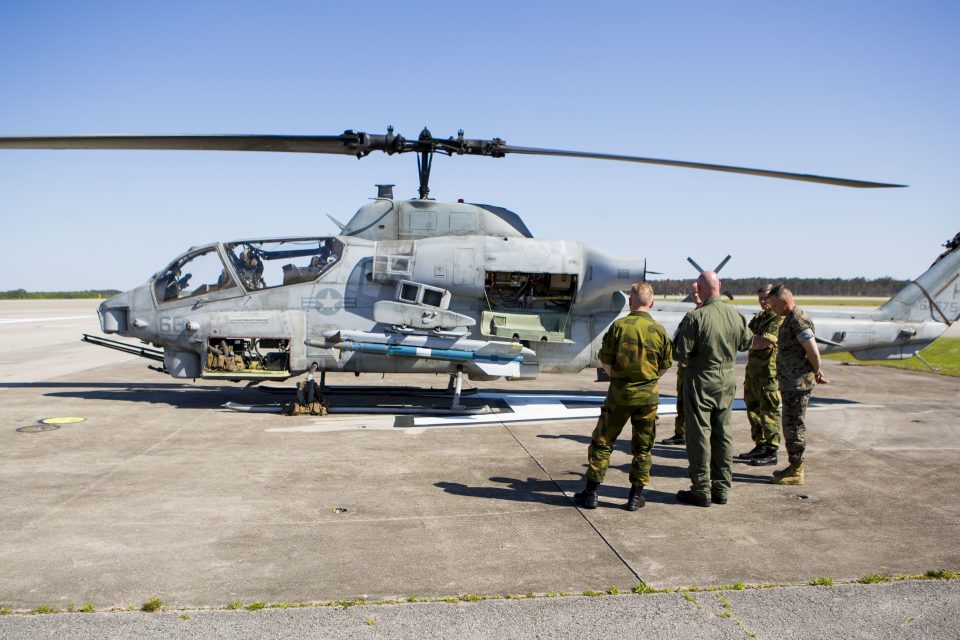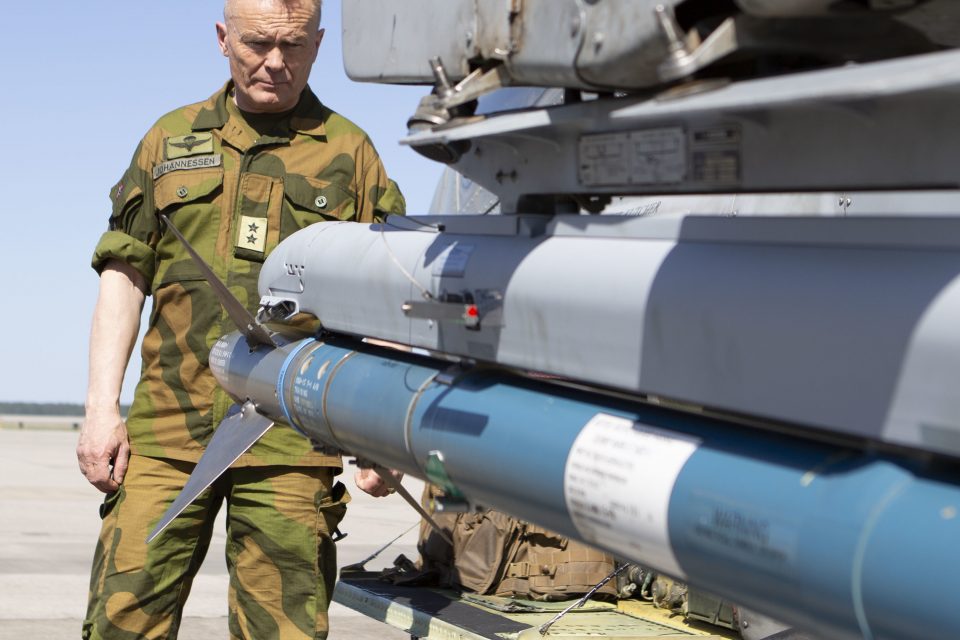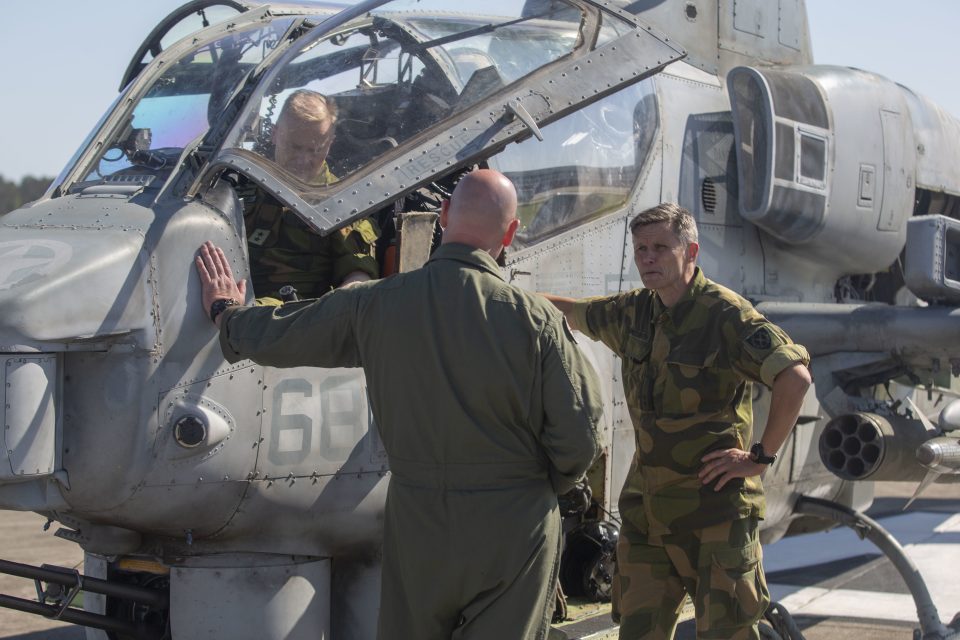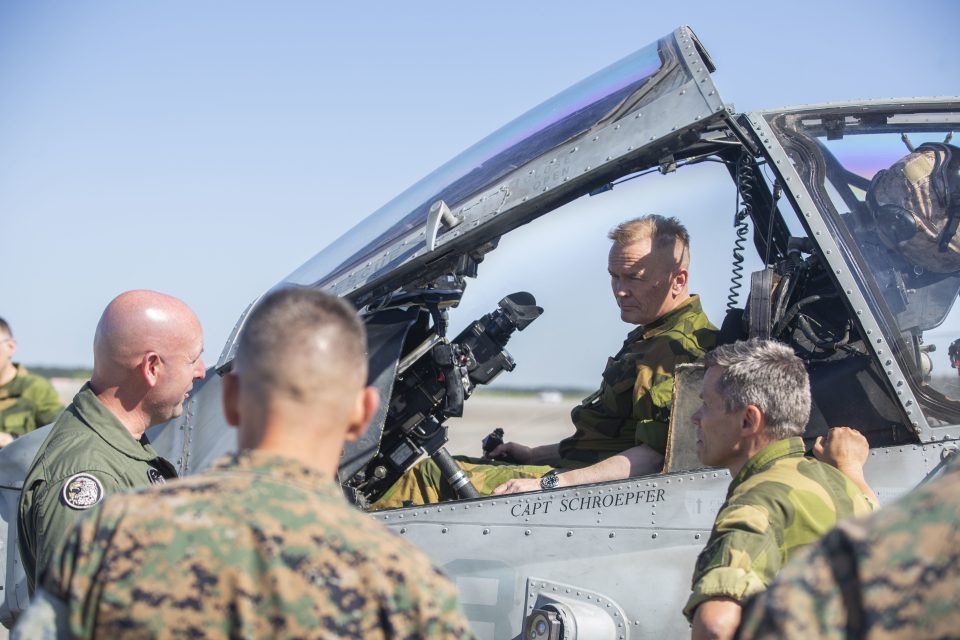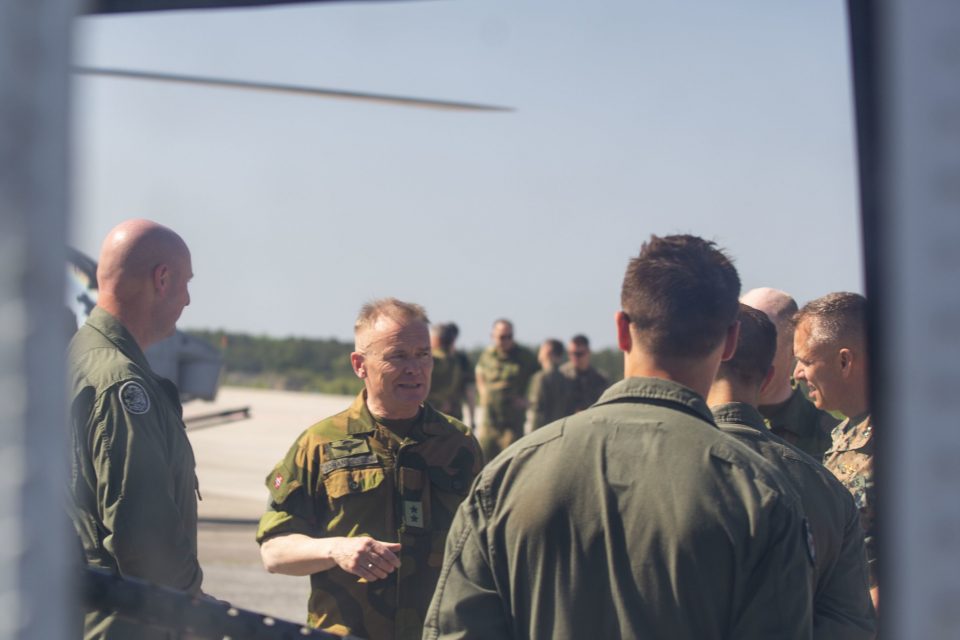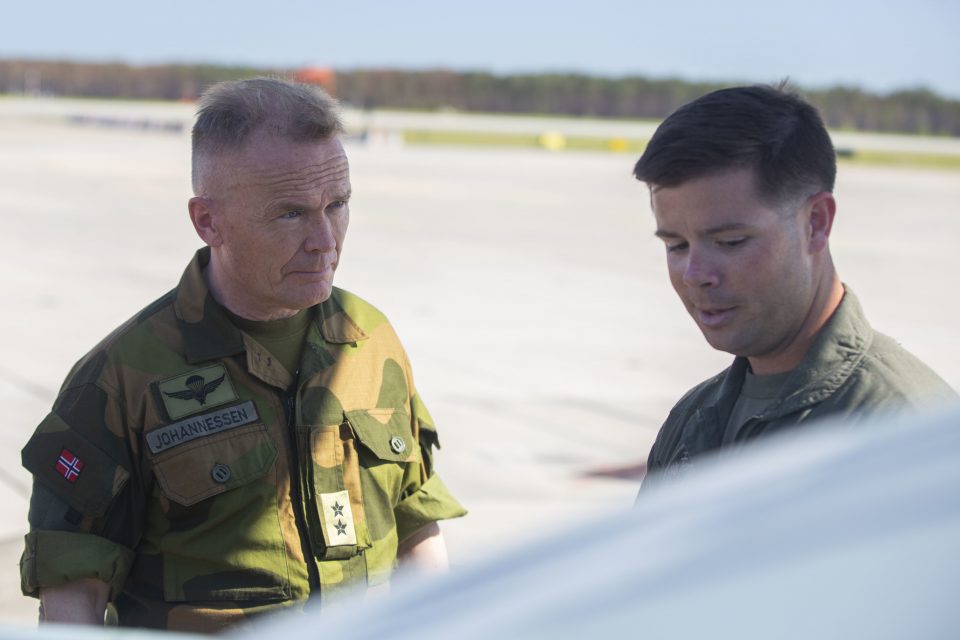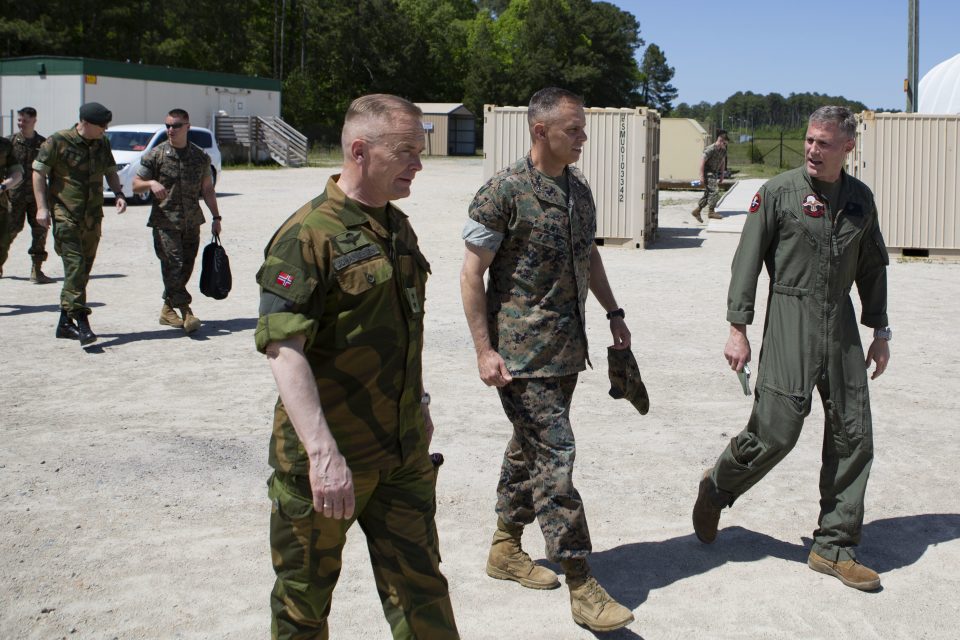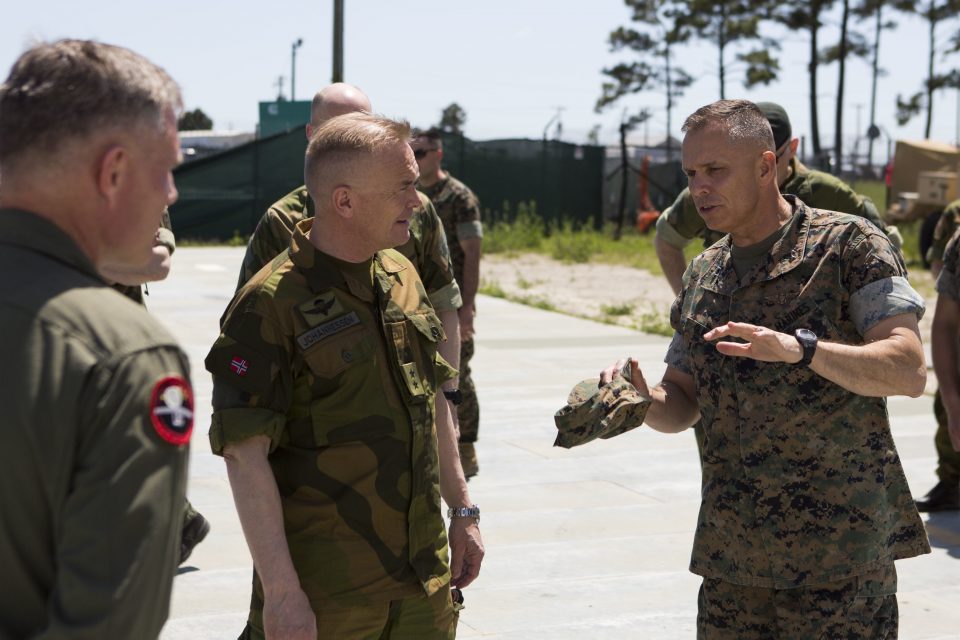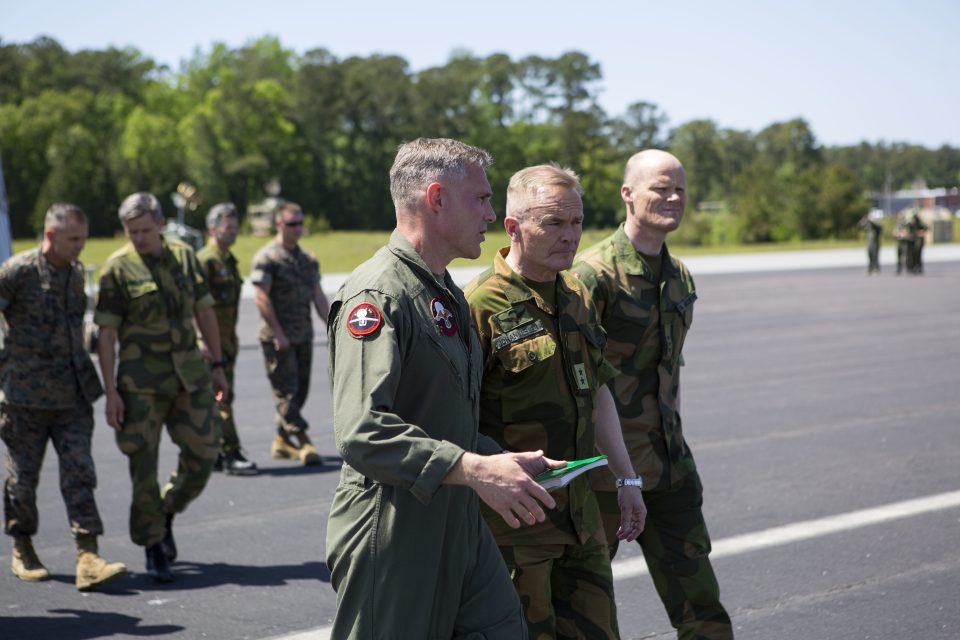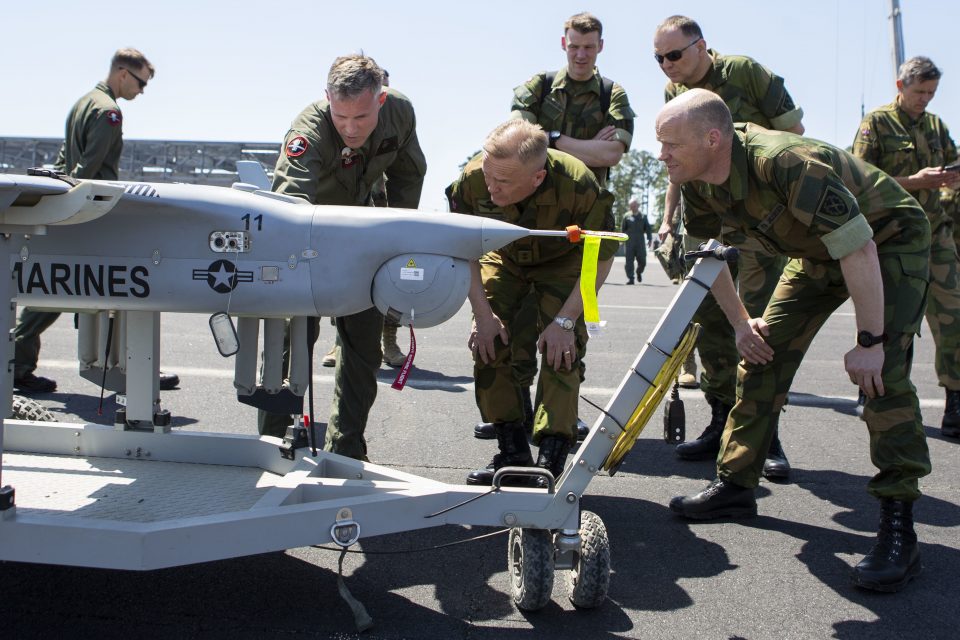The Marines are regular visitors to Norway and have prepositioned equipment in country.
As the Marines fly F-35Bs in the region and as the Norwegians continue to stand up their F-35 force, collaboration in this area will be accelerated as well.
Working a diversity of basing options within a crisis is part of an evolving deterrent strategy.
This March, the Marines conducted cold weather training in Norway.
According to a story written by Cpl. Victoria Ross of the 2nd MEF and published on March 15, 2018:
U.S. Marines with 2nd Marine Expeditionary Brigade battled freezing temperatures and snow while participating in Norwegian exercise Joint Reindeer 18 throughout various locations in Norway and north of the Arctic Circle from March 2-15, 2018.
Marines were augmented within a Norwegian unit, Norwegian Brigade-North, as they conducted an annual combined-arms exercise to bolster their military capabilities in a harsh cold weather environment. In addition, this training helped prepare the MEB staff for an upcoming exercise, Trident Juncture.
“It was a good opportunity to get a better understanding of Norwegian culture and how they do things,” said Cmdr. John Meeting, the staff medical planner with the unit. “It was a good learning opportunity to see some of the constraints you’re faced with in that type of environment.”
The training prepares the unit for future exercises and coping with the unrelenting arctic temperatures nations like Norway experience.
“Training such as Joint Reindeer 18 gives Marines the opportunity to work in a climate we often don’t see, giving us a better understanding of conducting operations in a cold weather climate,” said Staff Sgt. Steven Saitta Jr., the production and analysis chief with the unit. “Joint Reindeer presented Marines a unique opportunity to participate in an exercise led by another nation. The Norwegian Brigade-North took us in with open arms and made us feel welcomed.”
The training was designed to integrate Marines with the Norwegian Brigade-North to improve interoperability and share practices and procedures.
“I was on the part where patient movement was taking place,” said Chief Adrianna Foto, the health services support chief with the unit. “I was observing and learning about their processes like patient tracking and moving patients through the area. The harsh environment was a side that we are not very familiar with, so it was a good preview for exercise Trident Juncture.”
The MEB staff interacted with the administrative, intelligence, logistics, operations, communications and medical sections within the Norwegian Brigade-North command. Through this training, the MEB was able to focus on enhancing their command and control capabilities with partner nations.
“The biggest takeaway is our ability to quickly integrate with the Norwegian military and work together with ease,” said Saitta. “Training with foreign militaries gives us greater understanding of our allies and how we conduct operations in a coalition environment.”
The MEB provided advice and guidance in a coalition setting to improve cohesion among the two nations.
“The Norwegians were just as eager to learn from us as we were from them and took our input to heart and applied many of our recommendations to their exercise immediately,” said Saitta. “We arrived in Norway as strangers and departed Norway as friends.”
On April 30, 2018, Maj. Gen. Odin Johannessen visited 2nd Marine Air Wing. Johannessen, the chief of staff for the Norwegian Army, visited 2nd Marine Aircraft Wing in order to discuss the development of Trident Juncture 18, Norwegian and U.S. bilateral plans and upcoming deployments for training to Norway.
The slideshow below highlights his visit.


